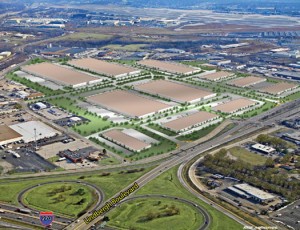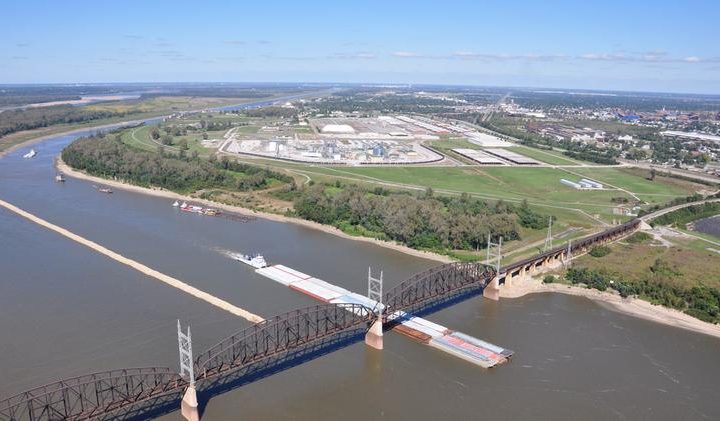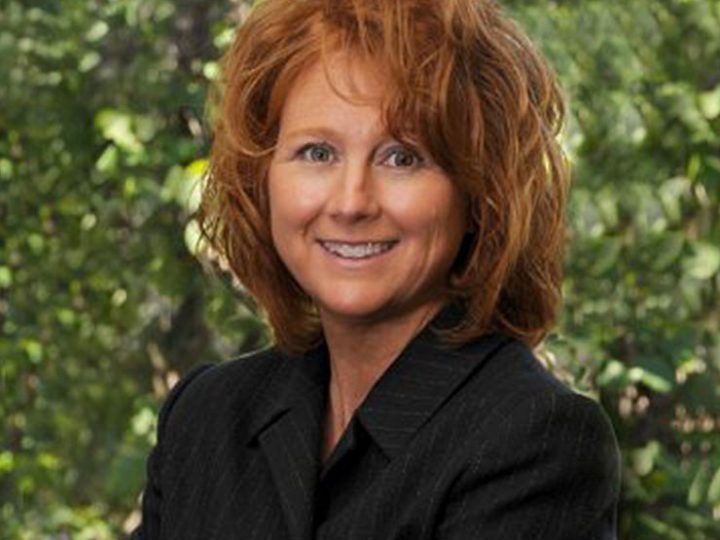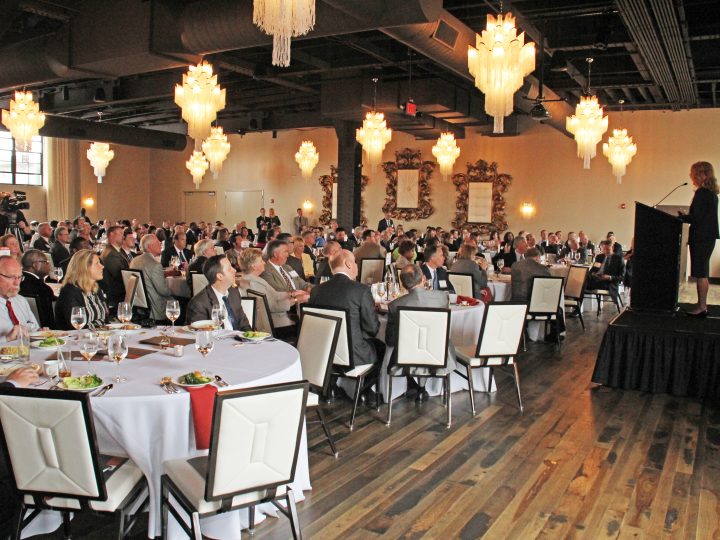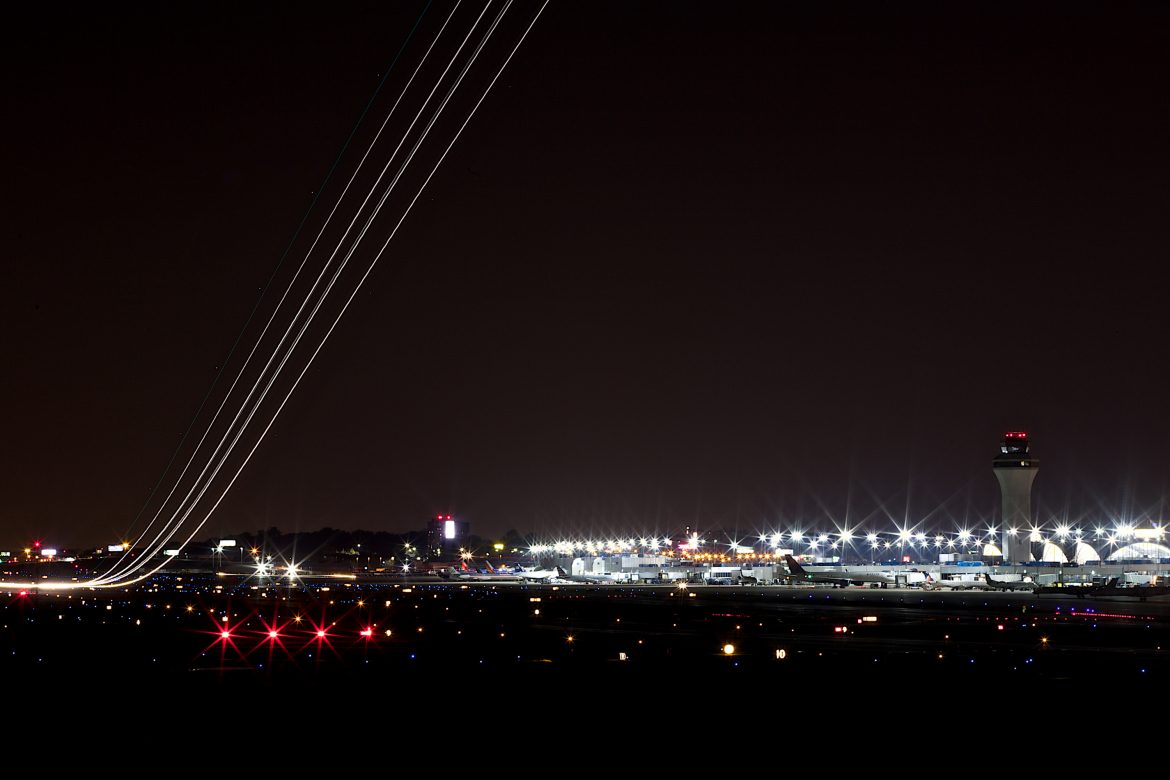
This story was originally written by Inbound Logistics in May 2016.
By Inbound Logistics
The most powerful word in the language of logistics is location. It’s a word heard over and over again in St. Louis. But location is just the beginning of the story.
Geographically situated in the mid-section of America, the St. Louis region has it all when it comes to freight assets. Located within 500 miles of one-third of the U.S. population, the St. Louis region is a premier freight hub and a transportation capital.
“I can’t think of any place in the country whose history is more closely linked with trade than St. Louis. That’s what we are talking about—trade. It’s about commerce. It’s about expanding economic opportunity,” said Administrator Gregory Nadeau of the Federal Highway Administration, during a visit to St. Louis on April 27, 2016, for the launch of the St. Louis Regional Freightway, the new freight district that is uniting public and private entities on both sides of the Mississippi River in southern Illinois and eastern Missouri on a scale unlike anything else, except for maybe St. Louis Cardinals baseball.
Through public-private partnerships, the mission of the St. Louis Regional Freightway is to accelerate regional economic growth through job growth in manufacturing and logistics, while optimizing the region’s prime multimodal infrastructure assets. It is the newest enterprise of Bi-State Development, which is empowered by Congress to lead economic development in the St. Louis region.
“We’ve reached a transformative moment in the history of our freight economy. In other words, the time to start planning and investing for the future is now,” Nadeau said. “Regionalism and this kind of smart strategic thinking…are leveraging maximum benefits for the people we all serve, and creates jobs and opportunities.”
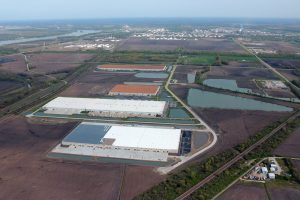 The Beyond Traffic study, released by the U.S. Department of Transportation in 2015, projects the U.S. population will grow by 70 million people and freight volume will increase by 45 percent by 2045. The St. Louis Regional Freightway is positioning itself to capture a major share of that future growth by establishing itself as the St. Louis region’s go-to source for coordinating freight activity, and attracting and expanding the industrial business market on both sides of the Mississippi River.
The Beyond Traffic study, released by the U.S. Department of Transportation in 2015, projects the U.S. population will grow by 70 million people and freight volume will increase by 45 percent by 2045. The St. Louis Regional Freightway is positioning itself to capture a major share of that future growth by establishing itself as the St. Louis region’s go-to source for coordinating freight activity, and attracting and expanding the industrial business market on both sides of the Mississippi River.
“How many other regions around the United States can say they are home to six Class I railroads with international market access, home to the third-largest inland port, home to two international cargo airports, and home to four interstates that provide great access to the north, south, east, and west along the nation’s freight corridors? The St. Louis region can,” says St. Louis Regional Freightway Executive Director Mary Lamie. “We have the largest manufacturing workforce compared to our peer cities, and we offer low transportation costs. In addition, we offer close proximity to manufacturing suppliers, plus well-positioned and available industrial real estate. All of that is music to the ears of site selectors. We are truly your gateway to the world.”
The St. Louis Regional Freightway provides assistance to site selectors, manufacturing, logistics and multimodal transportation companies, and their service providers. It is a key resource for all manufacturing and logistics companies considering the St. Louis region for a new or expanded operation. The freight district’s new website, TheFreightway.com, provides a one-stop comprehensive data experience for prospects evaluating the St. Louis region for investment.
“We partner with local real estate developers and incorporate them into the region’s competitive advantage,” Lamie says. “We talk about national companies within the region and global companies that are investing in the region’s industrial space.”
“Big picture, it all started with FedEx and UPS,” says Terry Stieve, managing director at commercial real estate firm Jones Lang LaSalle (JLL), which has corporate offices and operations from coast to coast. “Both FedEx and UPS have had major expansions in our region in the past two years. Their presence here is growing and that bodes well for the growth of our market.”
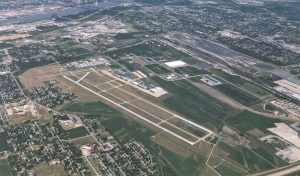 Because of these global investments in the St. Louis region, developers are investing in industrial space by building speculative warehouses even before tenants are signed. “That is a great indication of the confidence in the market,” says Stieve. “We are seeing a record amount of speculative warehouse space, either under construction or planned, in the St. Louis region.”
Because of these global investments in the St. Louis region, developers are investing in industrial space by building speculative warehouses even before tenants are signed. “That is a great indication of the confidence in the market,” says Stieve. “We are seeing a record amount of speculative warehouse space, either under construction or planned, in the St. Louis region.”
From the vantage point of his extensive experience in the St. Louis region, Stieve says the St. Louis Regional Freightway’s partnership approach will translate into even more progress in the years ahead.
Mark Branstetter agrees. “Bi-State Development is making this a very collective effort,” says Branstetter, a partner at Panattoni Development Company, the largest commercial developer in the St. Louis region. “This phenomenon is pretty new.”
“Critical to our success is our unified approach—working collectively as a region and focusing on our combined assets,” Lamie says.
A perfect example of where this kind of collaboration can lead is the Lakeview Commerce Center, a 750-acre distribution park with 330 acres available for development in Edwardsville, Ill.The park now comprises four buildings totaling more than 3.4 million square footage.The newest building in the park is a 769,500-square- foot speculative building completed by Panattoni Development Company called Lakeview IV. Panattoni Development has the capacity to build an additional 4.5 million square footage at the Lakeview Commerce Center.
Lakeview, which was developed by Panattoni and is being represented by JLL, was the product of extensive “public-private partnerships designed to better coordinate our region’s efforts to serve every step of the supply chain,” Stieve says.
Infrastructure Take Priority
To foster future freight growth, the St. Louis Regional Freightway is setting multimodal transportation priorities through regional collaboration with public officials and private sector leaders. Prioritizing freight development infrastructure projects will help the St. Louis region potentially secure infrastructure funding needed to keep the freight district competitive worldwide. Those infrastructure projects are aimed at enabling the supply chain to work effectively for the region’s manufacturing and logistics industries, and to support their immediate and future growth and success.
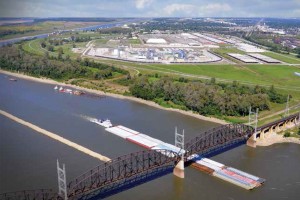 One priority is replacing the Merchants Rail Bridge over the Mississippi River, which carries Class I railroads. It is the sixth-busiest Mississippi River rail bridge in the nation, serving the third-largest rail hub. Another proposed high-priority project is widening Interstate 270 in both Illinois and Missouri. Interstate 270 is one of the most travelled freight corridors in the St. Louis region. The project list will be finalized in summer 2016.
One priority is replacing the Merchants Rail Bridge over the Mississippi River, which carries Class I railroads. It is the sixth-busiest Mississippi River rail bridge in the nation, serving the third-largest rail hub. Another proposed high-priority project is widening Interstate 270 in both Illinois and Missouri. Interstate 270 is one of the most travelled freight corridors in the St. Louis region. The project list will be finalized in summer 2016.
Proximity To Demand
At FW Warehousing, the “location, location, location” mantra goes a few more beats. “Logistics is all about location, infrastructure, labor, and the technology that ties it all together,” says Bob Shallenberger, vice president of business development.
FW operates more than four million square feet of company-owned warehouse facilities throughout the Midwest and Southeast, including the St. Louis, Chicago, Kansas City, Mo., Indianapolis, and Atlanta metro areas. The company has more than 50 years of experience in warehousing and third-party logistics, providing distribution and fulfillment services for manufacturers, distributors, e-commerce, and online companies worldwide.
“At FW Warehousing, we know we are in the real estate and labor business,” Shallenberger says. “Over the past few years, we added technology to the mix, but the gist is still the same: What’s most important is location, the proximity to demand.”
The St. Louis region fills that bill nicely. Similarly, the region offers an ideal transportation infrastructure to move goods, skilled labor to meet the peaks and valleys of industrial demand, and the availability of highly qualified IT personnel to manage staff and facilities as efficiently and cost-effectively as possible.
“We spend most of our efforts on improving the management of our facilities and labor through technology to provide customers with the best pricing and service possible,” says Patrick Carter, IT director at FW Warehousing.
 But location is still king. “St. Louis is located smack-dab in the middle of the United States,” Shallenberger says. “It is the closest American logistics hub to the population center of the country—Plato, Mo.—and the interstate system of St. Louis is unparalleled.” Four major interstates—I-70, I-64, I-55, I-44—converge in downtown St. Louis.
But location is still king. “St. Louis is located smack-dab in the middle of the United States,” Shallenberger says. “It is the closest American logistics hub to the population center of the country—Plato, Mo.—and the interstate system of St. Louis is unparalleled.” Four major interstates—I-70, I-64, I-55, I-44—converge in downtown St. Louis.
Shallenberger calls the St. Louis region the “alpha and omega” of the North American railroad system. As the third-largest rail center in the country, the region is home to the easternmost terminus of BNSF and Union Pacific and the westernmost of Norfolk Southern and CSX. Canadian National and Kansas City Southern also serve St Louis.
In addition, the Mighty Mississippi is at the heart of St. Louis inland barge traffic from Canada to the Gulf. And the Missouri River—often overlooked as the longest river in North America—also runs through St. Louis.
FW Warehousing takes full advantage of its location, boasting the most diverse footprint of contract and transactional warehouses in the St. Louis region. With warehouses on both sides of the Mississippi and rail spurs in Missouri and Illinois, FW offers facilities dedicated to industrial dry goods, food grade commodities, chemicals, pharmaceuticals, and e-commerce fulfillment.
“We have facilities for transloading and crossdocking, high-turnover goods, and longer-term dead storage,” Shallenberger says. “We offer co-packing, product sampling, pick-and-pack, end-of-aisle display building, kitting, labeling, and anything else our customers dream up. Our in-house IT department is the silent strength behind everything we do.
“Our in-house staff manages, implements, and customizes logistics solutions for customers,” he adds. “We do not sub out computer programming like some third-party companies. We build our own EDI and API, and manage our own file-transfer protocol across virtually all platforms.
“We also provide real-time inventory visibility through the FW Customer Portal, as well as data backup and security that rivals the largest international logistics and warehouse companies,” Shallenberger says.
FW offers ambient, conditioned, refrigerated, and frozen storage in multiple facilities. “If we don’t have existing space, our in-house construction team will build a customized solution,” Shallenberger says.
On The Up And Up
 Over the past two-and-a-half years, FW has added more than one million square feet of warehouse space in the St. Louis region. The trend continues in 2016, with the addition of a 475,000-square-foot facility in downtown St. Louis near the intermodal terminals. “We recently renovated a 1,200-foot rail spur in downtown St. Louis, adding wet and dry on-site silos as well as wet and dry tanker transloading equipment,” Shallenberger adds.
Over the past two-and-a-half years, FW has added more than one million square feet of warehouse space in the St. Louis region. The trend continues in 2016, with the addition of a 475,000-square-foot facility in downtown St. Louis near the intermodal terminals. “We recently renovated a 1,200-foot rail spur in downtown St. Louis, adding wet and dry on-site silos as well as wet and dry tanker transloading equipment,” Shallenberger adds.
In addition to warehousing, FW offers trucking services with more than 50 company-owned trucks and 200 trailers servicing the continental United States. FW offers same-day service within 325 miles of St. Louis and next-day service up to 550 miles.
What is the power behind St. Louis’ logistical strengths? “The combined advantages of strategic location, excellent infrastructure, and a skilled labor force propel a large and growing manufacturing sector in the bi-state St. Louis metropolitan statistical area (MSA),” says Cheryl Welge, senior business development executive for Ameren, an investor-owned electric and natural gas utility that serves approximately 2.4 million electric and 900,000 natural gas customers across 64,000 square miles in Illinois and Missouri.
“The region is also perfectly situated for distribution in the central United States, with access to a vast network of transportation infrastructure, a large labor force, and low cost of doing business,” Welge adds. “The two-state Ameren service area—including the St. Louis metropolitan area—is competitively positioned as the Midwest’s hub for distribution, manufacturing, and agribusiness.”
The utility operates as Ameren Missouri in the city of St. Louis and surrounding communities, and as Ameren Illinois in southwestern Illinois. It functions as a key factor in the region’s logistics advantages by offering customers cost-effective and reliable energy resources.
“Ameren’s reliable, low-cost energy rates reduce operating costs and provide businesses with the energy they need to compete in an ever-expanding global market,” Welge says. “The service area is home to world-renowned and groundbreaking research in agriculture, biofuels, and supporting technologies, with groundbreaking agriculture and technology research being conducted across the region.”
With more than 6,700 manufacturing firms and 280,000 manufacturing workers producing $130 billion-plus of manufactured goods per year, the St. Louis region also looks to Ameren to provide value-added development services to businesses considering a Midwest location. Those services include project management support in partnership with state and local development agencies, comprehensive community profiles and workforce demographics, internet-based building and site inventory, technical utility infrastructure and cost analysis, and access to energy efficiency programs and qualifying incentives.
“At Ameren, we understand that growing companies must be agile, strategic in their business decisions, and prudent in their investments,” says Michael Kearney, Ameren’s director of economic development. “Site selection decisions must be absolutely on target. Ameren’s economic development team is focused on making connections throughout the bi-state region.”
 Today’s customers have high expectations for the energy that powers their quality of life, Kearney says, so the utility is focused on building a next-generation energy and delivery system for the region it serves. As one of the Midwest’s largest investor-owned utilities, Ameren brings a breadth of knowledge and understanding of business location criteria to positively affect the long-term cost competitiveness of any business. Ameren offers the following value-added development services to businesses considering a Midwest location:
Today’s customers have high expectations for the energy that powers their quality of life, Kearney says, so the utility is focused on building a next-generation energy and delivery system for the region it serves. As one of the Midwest’s largest investor-owned utilities, Ameren brings a breadth of knowledge and understanding of business location criteria to positively affect the long-term cost competitiveness of any business. Ameren offers the following value-added development services to businesses considering a Midwest location:
- Project management support in partnership with state and local development agencies.
- Comprehensive community profiles and workforce demographics.
- Internet-based building and site inventory with GIS mapping capabilities.
- Technical utility infrastructure and cost analysis.
- Access to energy efficiency programs and qualifying incentives.
Built on a foundation of strong relationships and a common stake in sustainable community and regional development, Ameren supports regional development efforts, such as the St. Louis Regional Freightway, within the bi-state region.
Taking Flight
The St. Louis region has access to two airports, including St. Louis Lambert International Airport (STL), serving FedEx and UPS hubs, and MidAmerica St. Louis Airport, both of which are located in designated foreign trade zones (FTZs).
STL is the primary airport serving the region for both cargo and passenger transportation. The City of St. Louis owns and operates the airport, which is located 11 miles northwest of downtown St. Louis, between I-170 and I-270 in St. Louis County.
The airport controls approximately 3,970 acres of land, including 1,845 acres inside a secured operating area of 2.8 square miles. It also owns more than 2,125 acres outside of fenced area.
 With more than 80,000 departures annually, STL’s passenger operations also move cargo to and from the region. FedEx, UPS, and DHL dedicated cargo operations complement these flights, and so do multiple cargo charters throughout the year.
With more than 80,000 departures annually, STL’s passenger operations also move cargo to and from the region. FedEx, UPS, and DHL dedicated cargo operations complement these flights, and so do multiple cargo charters throughout the year.
“In 2015, 130 million pounds of cargo moved through the St. Louis Lambert International Airport,” says David Lancaster, STL’s director of cargo development. “The airport operates without restrictions or curfews every day, 24/7, and is easily accessible by the major interstates that pass through St. Louis.
With two cargo areas and a third under development, the airport is a key part of the region’s logistics focus.”
STL’s cargo operations offer aircraft parking adjacent to facilities, main deck loaders, bonded storage, secured warehouse facilities, direct ramp access, storage areas for cargo that requires special handling, workstations for make-up and breakdown of unit loading devices, and on-site U.S. Customs and Border Protection.
St. Louis recently expanded FTZ No. 102, fostering regional growth and reinvestment by mitigating the cost of importing goods into the United States. To further enhance trade and lower operating costs for local companies, the St. Louis County Economic Council and St. Louis County Port Authority received approval to designate all of St. Louis County and the City of St. Louis as foreign trade zones eligible under the Alternate Site Framework option recently made available by the U.S. Department of Commerce. This allows a company to receive the FTZ designation at its place of business, even if it is not within the established boundary of FTZ No. 102.
Upon arriving in the United States, goods transported to an FTZ receive special benefits, allowing companies that use the zone to defer, reduce, or eliminate customs duties on imported goods admitted into the zone for storage, manufacture, or processing. These benefits translate into considerable cost savings that can increase cash flow and grow business, giving local importers a competitive edge.
With four runways, STL is a large facility with significant capacity to meet the needs of expanded logistics operations that require uncongested access to the interstate network for distribution within and beyond the region. And, with the St. Louis region’s clear skies ahead, there are plans to grow.
“We are currently working on a 60-acre logistics development with the potential for more than 1 million square feet of terminal, direct access to the runway system, and the opportunity to re-activate a previously used rail spur,” Lancaster says. “This is planned to be operational in phases starting in 2017.”
That Word Again
“As in real estate, it’s location, location, location,” says Milton Cornwell, chief operating officer of Materialogic, a St. Louis-based third-party fulfillment, distribution, and logistics provider. “We’re centrally located near the population center of the United States, and that allows us to address today’s two key fulfillment issues: time in transit—the time from when our client’s customer places an order until they receive it—and freight expense.”
Cornwell cites the St. Louis region’s location at the intersection of four major interstate highways as a particular advantage. “St. Louis has an existing infrastructure for easy access to both inbound and outbound transportation,” he says. “The St. Louis region also has two underutilized airports capable of handling the largest cargo planes, in addition to rail service and the Mississippi River to provide all modes of transportation.”
The soon-to-be-completed expansion of the Panama Canal will make it easier to bring products produced overseas into the Midwest, which will make St. Louis an even more attractive option in the years to come, he notes. But while the region’s logistics advantages may begin with its physical location, they do not end there.
“The moderate cost of living and good school systems provide a solid workforce for Materialogic to draw from,” Cornwell says. “And Mother Nature tends to be kind to St. Louis. We do not experience the radical swings in weather, such as massive winter storms or hurricanes, that can sometimes paralyze wide regions of the country.
“Our most common weather events are tornadoes and river flooding, which have a limited effect on warehousing facilities and transportation modes,” he adds.
Materialogic recently reconfigured its St. Louis-based warehouse operations to more efficiently handle the needs of e-commerce clients in the future. The reconfiguration includes a new 163,000-square-foot distribution facility in Bridgeton, Mo.
“The new building is a perfect fit for our current needs and future expansion plans,” Cornwell says. “This state-of-the-art facility has the capabilities to store and distribute products and materials that require temperature control, high security, and special handling. It even has one of the largest FDA drug vaults in the country.”
Materialogic also maintains a facility in American Canyon, Calif. It can use the two points of origin separately or together, as demand requires. It can reach most nationwide customers in three days or less. “We operate multiple climate-controlled, FDA/food-grade registered facilities for clients who require special needs,” Cornwell says.
The company’s Infoplus software enables clients to minimize transit time and maximize freight savings. “We offer services that support omni-channel e-commerce and retail clients who need both B2C and B2B distribution,” Cornwell says. “And we have an experienced and long-tenured workforce that understands logistics and the technology that drives it.”
Materialogic is a founding partner of the Materialogic Supply Chain Alliance, whose members collaborate to provide end-to-end supply chain management and e-commerce solutions for clients. The company’s partners include leading companies in the fields of ad specialty, call center, e-commerce, marketing, media replication, printing, transportation, and warehousing.
Preparing Logistics Leaders
Just as the St. Louis region offers a host of benefits, the University of Missouri -St. Louis (UMSL) also has natural advantages, including a hub for logistics and supply chain education. Dr. James Campbell, professor and chair of UMSL’s Logistics and Operations Management Department, cites the department’s three major assets: educational excellence, real-world relevance, and value.
“One of our program’s key ultimate values is documented by students’ success in their careers,” Campbell says. “We want to educate students not just for their first job, but also for their fourth—and 14th—position as they build their career.”
To that end, he says, the school’s academic programs concentrate on the core areas within logistics and supply chain management, and on analytics. He explains supply chain management in terms every consumer understands.
“Look at the Old Navy website,” he says. “It amazes me that you can find more than 50 different flip-flops—in myriad colors and patterns, all made halfway around the world—and the cost is as low as $1. How do they do that? Supply chain management.”
If that illustration does not make the point, he uses another example his students appreciate. “Beer has a long heritage in St. Louis with Budweiser and Anheuser-Busch, so I ask my students to think about how many continents are represented in their local grocery store’s beer section,” he says. “Usually it’s five or six continents. Then I ask the students to think about the cost of that six-pack travelling from Australia or someplace far away. It’s heavy and sent halfway around the world, so it ought to cost much more than the beer brewed in downtown St. Louis. But it doesn’t. Why is that? Supply chain management.”
UMSL’s Logistics and Operations Management Department offers a full range of programs, including a bachelor’s degree with concentrations in logistics, supply chain, and operations management; an MBA with emphasis in logistics, supply chain and operations management, and business analytics; and a Ph.D. in logistics and supply chain management.
 “Our current focus is on raising the profile of the undergraduate supply chain program,” Campbell says. “Our department has long been known for excellence in research and graduate education, but we want to refine our undergraduate focus on supply chain management, as that better reflects what we do and the great opportunities and workforce needs in this region. We plan to roll out new supply chain programs as we move to our new College of Business Administration building in 2017.”
“Our current focus is on raising the profile of the undergraduate supply chain program,” Campbell says. “Our department has long been known for excellence in research and graduate education, but we want to refine our undergraduate focus on supply chain management, as that better reflects what we do and the great opportunities and workforce needs in this region. We plan to roll out new supply chain programs as we move to our new College of Business Administration building in 2017.”
Key aspects of the focus on undergraduate supply chain education are new student engagement activities including internships, a transportation and supply chain club, and mentoring programs through the school’s advisory board. “We also work to leverage the resources of the College of Business Administration,” Campbell says, adding that supply chain management is a broad field covering nearly all areas of business.
Real-World Students
Campbell says UMSL students are well positioned to take advantage of the broad spectrum of supply chain offerings. “Our students are often more non-traditional than at many other schools,” he says. “We like to say they are a ‘gritty bunch.’ We mean that in the best possible way; our students are mature, work part- or full-time, and are in school for the right reasons—to learn and advance their education and careers. They know what it means to work hard and they value how we blend classroom learning with experiential opportunities.”
All of which contributes to the school’s emphasis on real-world relevance, which “comes from several aspects of our programs, including our corporate advisory board, focus on applied research, and active internship program,” Campbell says. “We pride ourselves on applied research in the St. Louis region and beyond, and we strive to engage students in research projects that apply our knowledge to create real and lasting impacts for organizations.”
The school is closely associated with two research centers in the college—the Center for Business & Industrial Studies and the Center for Transportation Studies. Research projects have included drone delivery alternatives, barge transport on the Upper Mississippi River, airport ground operations, and decision support systems for a variety of supply chain settings.
“There is great value in being an urban public research university,” Campbell says. “We have great placement and internship opportunities for students, as well as opportunities for applied research in a wide range of firms that face an array of challenging problems. We also provide the workforce for the St. Louis region with more than 90,000 alumni, most in the St. Louis region, and more than 27,000 alums from the College of Business Administration.”
The right people in the right place at the right time meet in St. Louis. Now that’s a perfect location.

